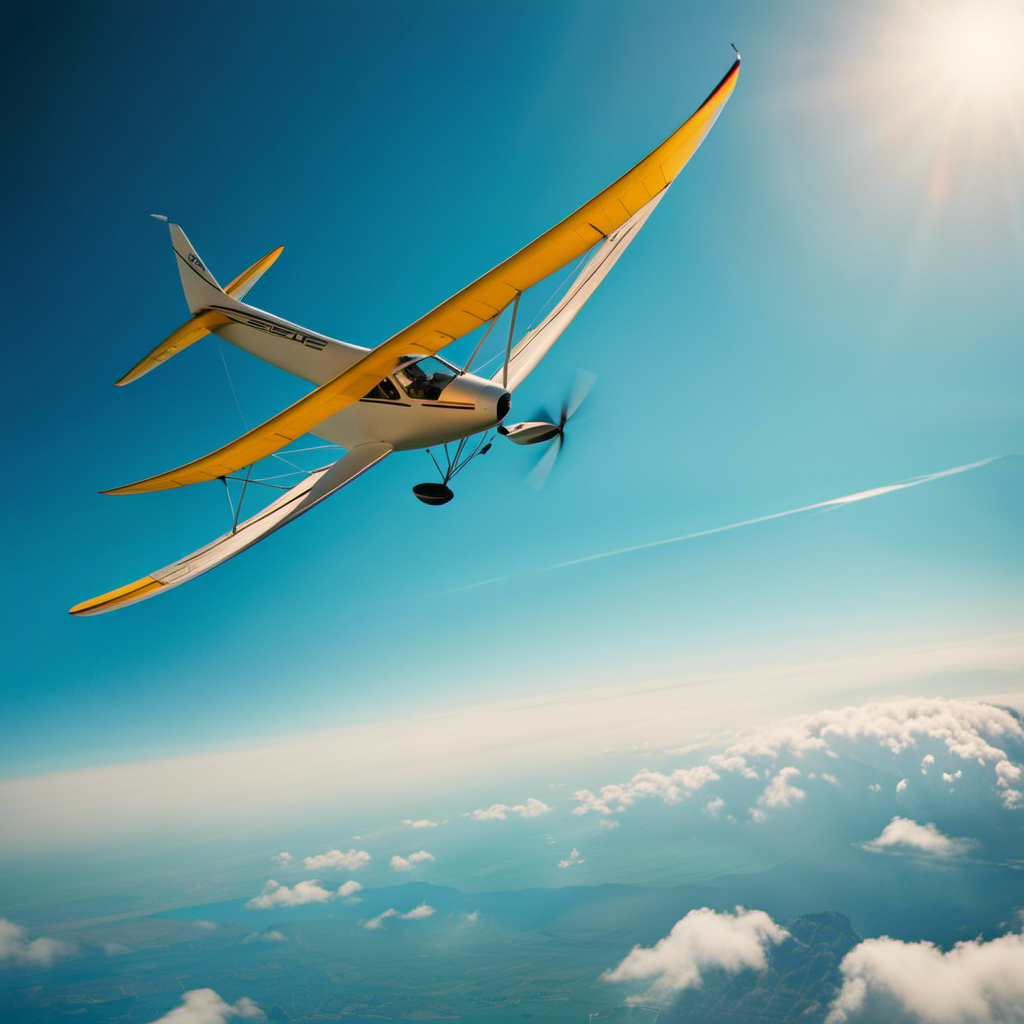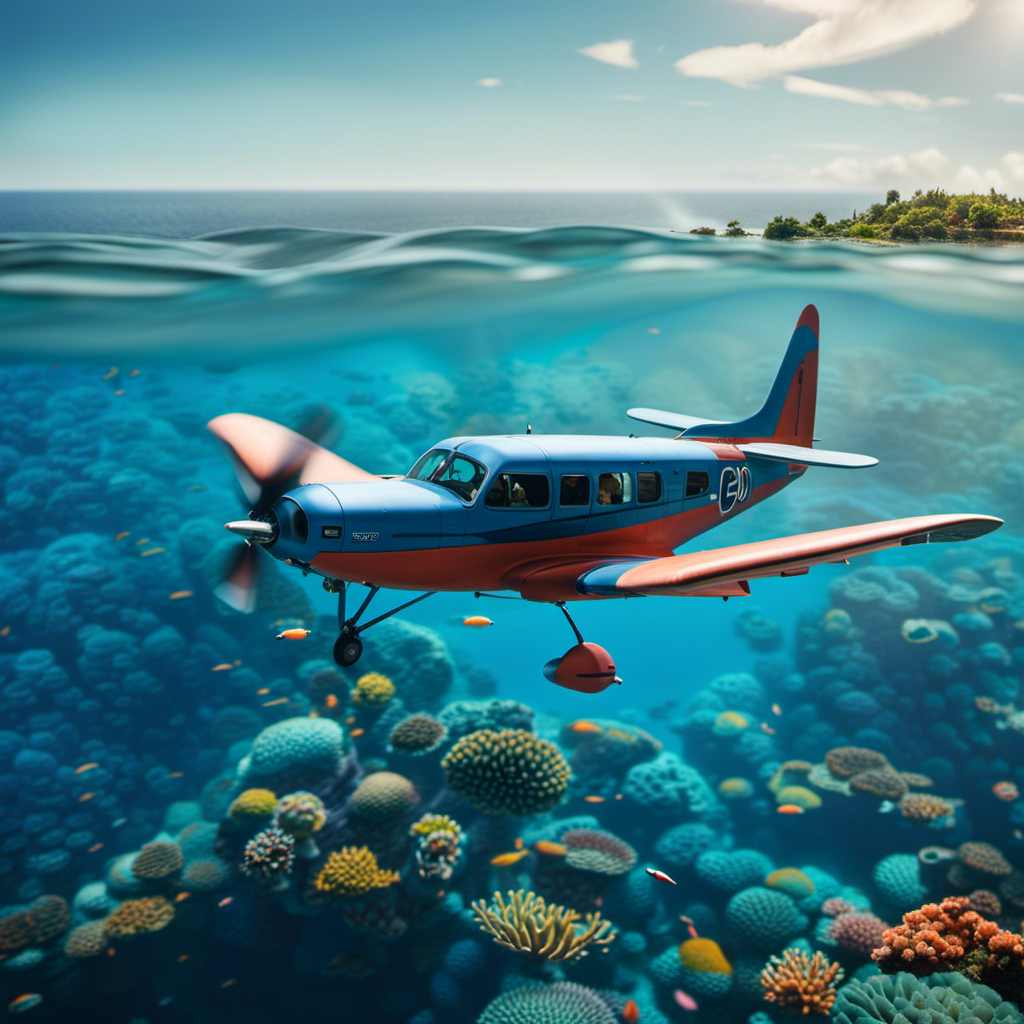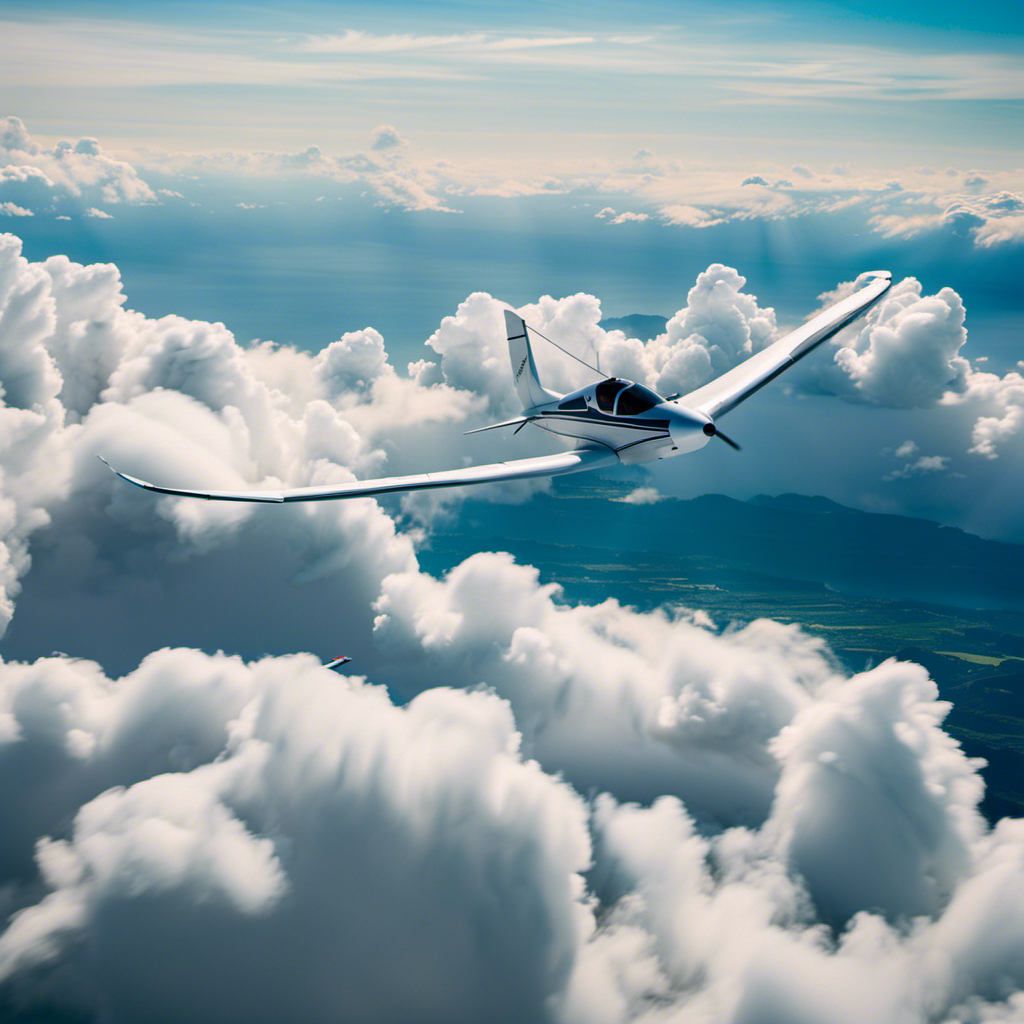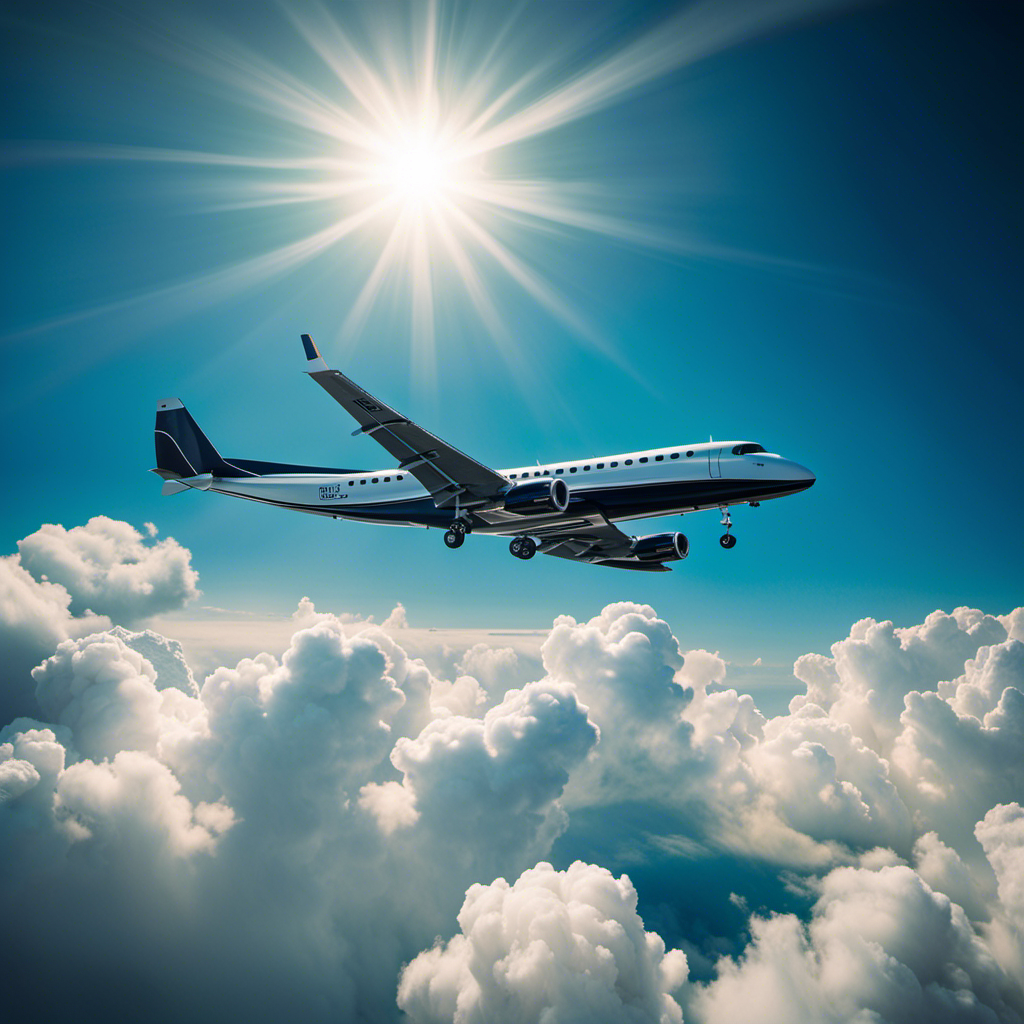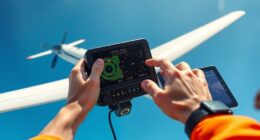I glide through the skies, feeling the rush of wind against my face and the thrill of soaring above the world.
In gliding, I control the movements of the glider, mastering the art of takeoff and landing.
I search for thermals, riding the currents to new heights.
I navigate cross-country, exploring new landscapes from a unique vantage point.
I compete with fellow gliders, challenging my skills and pushing my limits.
Join me in this exhilarating journey as we discover the joys of gliding together.
Key Takeaways
- Joining a gliding club provides opportunities to learn and improve skills, receive guidance from experienced gliders, and access gliders, equipment, and facilities.
- Regular maintenance and meticulous inspection of gliders before every flight are essential for safe flights.
- Gliding adventures offer the exhilaration of soaring through the skies, mastering flying techniques, and utilizing thermals and ridge lift for extended flights and breathtaking views.
- Key elements of flying techniques include effective aircraft control, efficient utilization of thermals and ridge lift, energy management for longer distances, and enhancing gliding adventures for a safer experience.
Understanding the Basics of Gliding
Gliding is a recreational activity that involves flying without an engine. Understanding gliding techniques and implementing safety measures are crucial to ensuring a successful and enjoyable experience.
Gliding techniques encompass a variety of skills, including how to read the weather conditions, how to position the glider for maximum efficiency, and how to maintain control during different flight maneuvers.
Safety measures in gliding are of utmost importance, as there is no engine to rely on for emergencies. These measures include thorough pre-flight checks, understanding emergency procedures, and constantly monitoring the surroundings for potential hazards.
Learning to Control the Glider
After getting comfortable with the basics, it’s important to start practicing how to control the glider. Learning techniques for mastering control is crucial in becoming a skilled glider pilot. Here are two key areas to focus on when it comes to controlling the glider:
-
Aileron Control:
- Understanding how to manipulate the ailerons, which are located on the wings, is essential for controlling the roll of the glider.
- By moving the control stick or wheel sideways, you can tilt the ailerons, causing the glider to roll left or right.
-
Elevator Control:
- The elevator, located on the tail of the glider, is responsible for controlling the pitch or angle of the glider.
- Moving the control stick or wheel forward or backward adjusts the elevator, allowing you to control the glider’s climb or descent.
Mastering these control techniques will lay a solid foundation for your gliding skills.
Now, let’s explore the next section on taking off and landing techniques.
Taking Off and Landing Techniques
Before taking off and landing, it’s important to familiarize yourself with the proper techniques for a successful flight.
When it comes to landing techniques, there are a few key factors to consider. First, maintaining a steady descent rate is crucial. By adjusting the glide path and controlling the airspeed, you can ensure a smooth touchdown. Additionally, keeping a constant eye on the runway and aligning the glider with the centerline helps maintain accuracy during the approach.
On the other hand, takeoff procedures require a different set of skills. It’s important to have a clear understanding of the wind direction and speed, as they affect the takeoff performance. Applying the appropriate amount of control inputs and smoothly accelerating the glider will lead to a successful takeoff.
Mastering these techniques sets the foundation for a safe and enjoyable flight, enabling glider pilots to soar and find thermals effortlessly.
Soaring and Finding Thermals
To soar and find thermals effortlessly, try adjusting your flight path and staying vigilant for signs of rising air currents.
Soaring techniques in gliding require a keen understanding of wind patterns and the ability to read the subtlest of clues in the atmosphere. As you fly, keep a watchful eye on the behavior of birds, as they are expert soarers. Look for areas of convergence, where two wind currents collide and create upward drafts. These are often indicated by the presence of cumulus clouds or the convergence of two landscape features, such as hills or valleys.
By adjusting your flight path to these areas and using your knowledge of wind patterns, you can harness the power of the rising air to stay aloft for extended periods of time.
With these techniques mastered, you can now move on to the thrilling world of cross-country flying and navigation, where you will put your soaring skills to the test in longer and more challenging flights.
Cross-Country Flying and Navigation
Navigating cross-country flights requires a deep understanding of wind patterns and the ability to read subtle atmospheric clues. Cross country flight planning is a meticulous process that involves analyzing weather patterns, selecting optimal routes, and calculating fuel consumption. Utilizing instruments for navigation is crucial in ensuring accurate positioning and course adjustments.
Here are three essential aspects of cross-country flight planning that evoke a sense of adventure and challenge:
-
Planning alternate landing sites in case of unexpected weather changes, creating a sense of preparedness and adaptability.
-
Monitoring the changing wind patterns and adjusting the flight path accordingly, creating a sense of anticipation and excitement.
-
Using advanced navigation instruments like GPS and VOR to accurately navigate through unfamiliar territories, creating a sense of precision and control.
Mastering these skills not only enhances the safety of cross-country flights but also amplifies the thrill of soaring through the skies. Transitioning into advanced gliding maneuvers requires a solid foundation in cross-country navigation techniques.
Advanced Gliding Maneuvers
Monitoring wind patterns and adjusting the flight path accordingly is essential for mastering advanced gliding maneuvers. These techniques go beyond the basic skills of gliding and require precision and finesse.
One such technique is the aerobatic maneuver, which involves performing intricate and graceful maneuvers in the air. This requires a deep understanding of the glider’s capabilities and a keen sense of timing.
Advanced gliding techniques also include advanced turning and climbing techniques, such as thermalling and ridge soaring, which allow the pilot to gain altitude and cover long distances efficiently. These maneuvers require a combination of skill, knowledge, and experience to execute successfully.
Participating in Gliding Competitions
Once you’ve mastered advanced gliding maneuvers, participating in gliding competitions becomes an exciting opportunity to showcase your skills and compete against other talented pilots. To succeed in these competitions, it is important to have a solid understanding of gliding competition strategies and to thoroughly prepare yourself for the challenges that lie ahead.
To give you an idea of what it takes to excel in gliding competitions, here is a breakdown of some key strategies and tips:
| Competition Strategy | Description |
|---|---|
| Study the Course | Familiarize yourself with the competition course and identify potential challenges or areas where you can gain an advantage. |
| Optimize Speed | Focus on maximizing your glider’s speed by utilizing efficient flying techniques and taking advantage of favorable wind conditions. |
| Stay Focused | Maintain a high level of concentration throughout the competition, making sure to stay aware of your surroundings and react quickly to changing conditions. |
| Analyze Your Performance | After each competition, take the time to analyze your performance and identify areas for improvement. |
Joining a Gliding Club or Community
To fully immerse yourself in the gliding world, joining a gliding club or community is a great way to connect with fellow enthusiasts and gain access to valuable resources and support. Here are three benefits of joining a gliding community:
-
Camaraderie: Being part of a gliding club allows you to connect with like-minded individuals who share your passion for soaring through the skies. The sense of camaraderie and friendship that develops within these communities is invaluable.
-
Learning opportunities: Gliding clubs provide an excellent platform for learning and improving your skills. Experienced gliders are often willing to share their knowledge and offer guidance, helping you to enhance your flying techniques and expand your understanding of gliding.
-
Access to resources: Joining a gliding club grants you access to a range of resources, including gliders, equipment, and facilities. This ensures that you have everything you need to pursue your gliding adventures, without the hassle of having to purchase and maintain your own equipment.
By becoming part of a gliding club or community, you can fully immerse yourself in the gliding world and benefit from the support, knowledge, and resources that these communities provide.
Now, let’s explore glider maintenance and safety practices.
Glider Maintenance and Safety Practices
Regular maintenance is essential for keeping a glider in optimal condition and ensuring safe flights. Glider inspection is a crucial part of this maintenance routine. Before every flight, I meticulously examine the glider to ensure that all components are in proper working order. This includes checking the control surfaces, canopy, landing gear, and instruments. Any signs of wear, damage, or malfunction are immediately addressed and repaired.
Additionally, I am well-versed in emergency procedures. I know how to handle various in-flight emergencies, such as loss of control, structural failures, or adverse weather conditions. I am trained to react quickly and effectively to ensure the safety of myself and others.
Experiencing the Thrill of Gliding Adventures
Feel the rush of adrenaline as you soar through the skies, experiencing the thrill of gliding adventures. Gliding is an exhilarating activity that combines the beauty of flight with the raw excitement of being propelled by the elements.
To fully enjoy this adrenaline rush, it is important to master certain flying techniques. Here are four key elements to consider:
-
Controlling the aircraft: Gliders rely on the pilot’s ability to control the aircraft using weight shifting and control surfaces. Understanding how to adjust these controls effectively is crucial for a safe and enjoyable flight.
-
Utilizing thermals: Thermals are pockets of rising air that can provide gliders with the lift needed to gain altitude. Learning to identify and utilize thermals efficiently is essential for extended flights and exploring new areas.
-
Understanding ridge lift: Ridge lift occurs when wind encounters a slope or terrain feature. By flying close to these ridges, gliders can soar along the uplifted air, allowing for longer flights and breathtaking views.
-
Practicing energy management: Gliders have limited energy, so it is important to conserve and manage it effectively. This involves making strategic decisions about when to climb, when to descend, and how to optimize the glide ratio to cover longer distances.
Mastering these flying techniques will not only enhance your gliding adventures but also ensure a safer and more rewarding experience. So strap in, tighten your harness, and get ready for an adrenaline-fueled journey through the skies.
Frequently Asked Questions
How much does it cost to go gliding?
The cost of gliding varies depending on factors such as location, duration, and the type of glider used. Additionally, gliding equipment includes a glider, parachute, radio, and necessary safety gear.
What is the maximum altitude a glider can reach?
When it comes to gliding, the sky’s the limit. Gliders are capable of reaching astonishing maximum altitudes, defying gravity with their sleek design and minimal propulsion. It’s a testament to the remarkable capabilities of these graceful aerial machines.
Are there any age restrictions for gliding?
There are no age restrictions for gliding, making it an inclusive activity for seniors. Gliding offers numerous benefits for older individuals, including the opportunity to stay active, enjoy nature, and experience the thrill of flying. Additionally, there are gliding opportunities available for disabled individuals, allowing them to participate in this exhilarating sport.
Can I go gliding if I have motion sickness?
Yes, you can go gliding even if you have motion sickness. Gliding involves flying in a controlled manner without the need for engine power, which can reduce the feeling of motion sickness. However, if you also have a fear of heights, gliding may not be suitable for you.
What are the benefits of joining a gliding club?
Joining a gliding club has numerous benefits. Not only do they provide safety precautions, but they also offer access to various types of gliders. Being a member allows you to learn and experience the thrilling world of gliding firsthand.
Conclusion
In conclusion, gliding is an exhilarating sport that offers a unique and thrilling experience. From learning the basics of controlling a glider to mastering the art of soaring and finding thermals, gliding provides endless opportunities for adventure.
Whether you choose to participate in competitions or simply join a gliding club to connect with like-minded individuals, the sense of community is unparalleled. The maintenance and safety practices ensure a safe and enjoyable experience.
So strap in, spread your wings, and prepare to be blown away by the awe-inspiring world of gliding. It’s a ride you won’t soon forget.
With a heart that soars as high as the skies, Aria, affectionately known as “Skylark,” is the driving force behind Soaring Skyways. Her journey into the gliding world began as a young dreamer gazing up at the soaring birds, yearning to experience the weightlessness and freedom they embodied. With years of experience both in the cockpit and behind the scenes, Aria’s commitment to the gliding community is unwavering.
